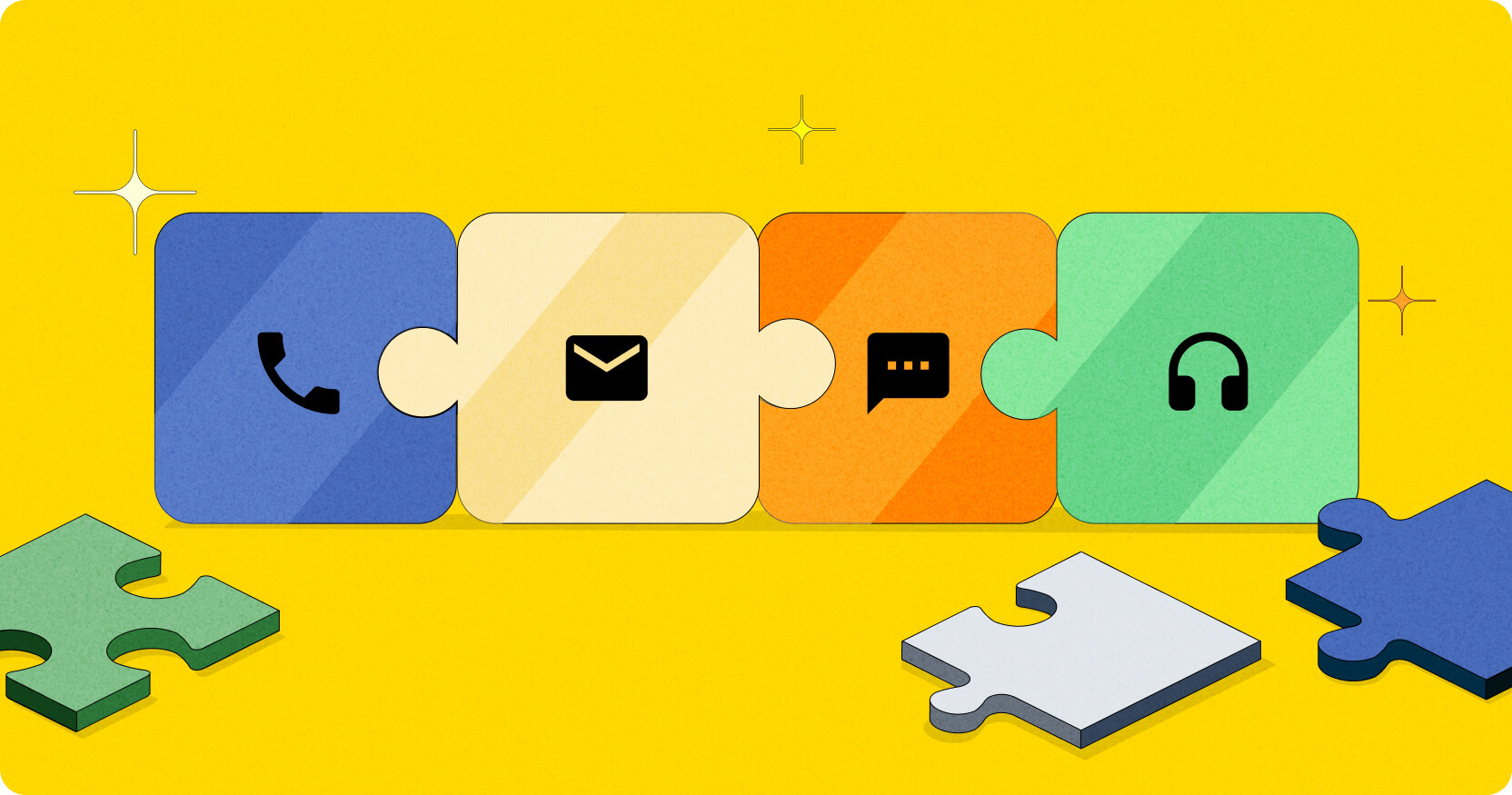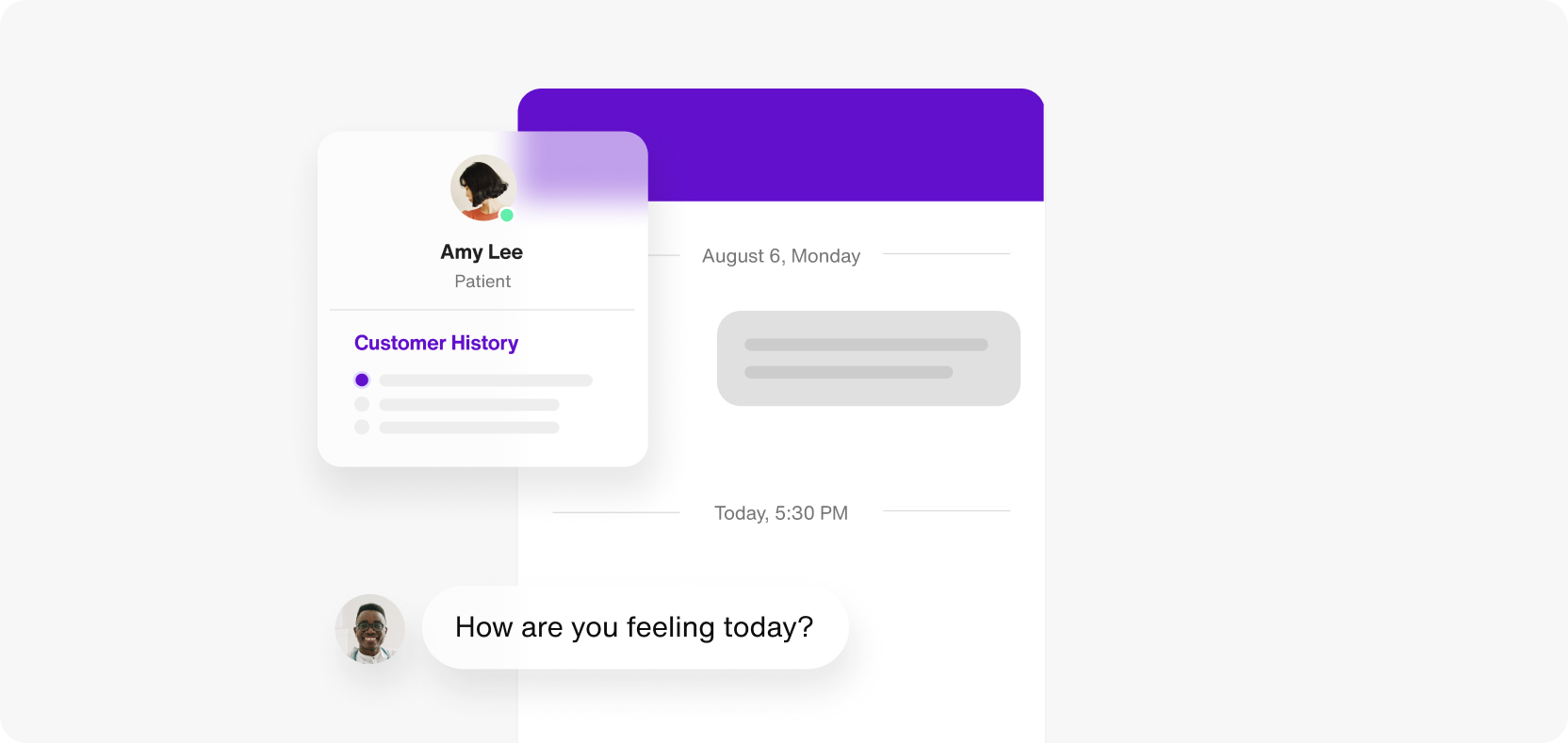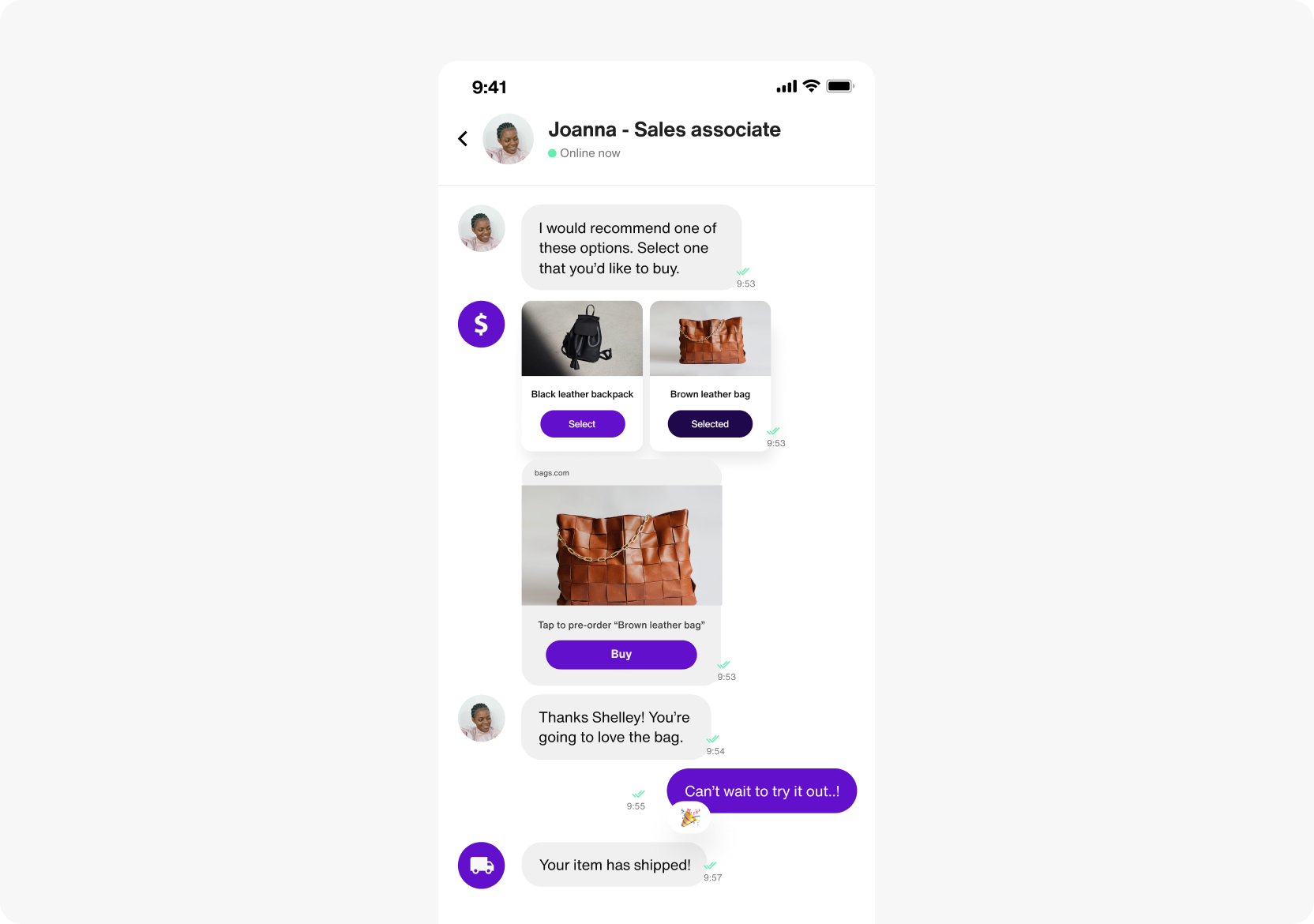The future of messaging in mobile apps: Trends and predictions

In-app messaging enhances every mobile app.
We know we’re biased. However, conversations are the starting point of every customer relationship. Messaging engages, supports, and grows with your customers. The impacts of messaging ripple through every aspect of your mobile experience.
Because we live and breathe in-app messaging, we like to keep tabs on the trends and predictions of mobile app messaging to improve our product and our customers’ experience.
In this blog, we go over some recent trends and predictions of mobile app messaging, starting with a look into the current state of messaging in mobile apps.

Elevate in-app engagement eBook
Current state of the mobile app
2022 was a substantial year for mobile.
Data.ai released its State of the Mobile 2023 report and found that downloads grew to 255 billion (+11% YoY), and hours spent on mobile grew to 4.1 trillion (+9% YoY).
Mobile will be a battleground for unprecedented consumer touch, engagement, and loyalty this year. While demand for mobile apps accelerated, customers spent less. And even though they’re spending less, expectations remain high.
Rebounds in travel and interest in language learning have led to growth with apps like Booking.com, Airbnb, and Duolingo.
Gaming remains a top app category, along with health and wellness apps, finance apps, and food delivery.
Messaging continues to be a popular app activity, surpassing social media use. The use cases of in-app messaging have evolved significantly to include feature-rich applications and messaging encompassing more than just user-to-user.
Today, most apps support a wide range of features beyond what they initially promised – they are versatile. Apps can provide support, facilitate sales, enable communication, and more. And to do that, they look to messaging.
Trends shaping the future of mobile app messaging
The idea of versatility lives within many of these 2023 app trends. Here are some trends that are shaping mobile app messaging:
AI and chatbots
The integration of artificial intelligence in messaging is a hot topic right now, mainly because AI enables more natural and personalized interactions with users.
What’s the difference between AI and a chatbot? A chatbot is a computer program designed to simulate human conversation. They can sometimes automate common tasks, such as answering frequently asked questions, booking appointments, or providing support.
Chatbots are a type of conversational AI. But not all chatbots are conversational. Most chatbots use keywords and rules to trigger pre-written responses – not conversational AI technology.
The use of AI and chatbots enables faster customer support responses and can also be used to automate common tasks. AI also encourages more sophisticated interactions between users and apps. If AI can help land a sale based on the user’s interests and preferences.
Another application of AI is that it can improve the accuracy of language translation capabilities. This is particularly important for apps used globally, where users may send messages in many different language.
With AI, companies can break down language barriers and enable communication between users who may not speak the same language.
Voice and video messaging
Voice and video messaging are increasingly becoming common features in apps, as they add a more personal and immersive way for users to communicate with each other.
A great example of this is Slack adding audio huddles and the ability to send video clips. In addition to its already famous messaging features, voice and video add more opportunities for people to connect.
With voice messaging, users can record and send audio messages to each other. This also adds a personal touch to conversations, as users can hear each other’s voices and tone.
Video messaging takes this a step further and assists with sharing visual information.
Integrations

Integrations allow app builders to add new functionality and enable users to perform various tasks without ever leaving the app.
Integrations make everything more convenient and versatile. Integrations are essential for any app, from logging in securely to sending a message or connecting a payment type.
Messaging apps can be integrated with third-party services such as calendars, AI task managers, or project management tools.
Integrations can also be a massive help with customer service by integrating a CRM with the platform to allow easy access to customer information and purchase history.
As mentioned earlier, apps can also be integrated with chatbots and other AI-powered tools to perform tasks like booking appointments, ordering food, and purchasing products.
Increased personalization

Personalization is becoming an increasingly hot topic in the business world. Customers want to know that they are individuals, and that you care about them specifically. So it makes sense that instances of using customer data to personalize business interactions are on the rise.
What helps with personalization? Customer accounts, messaging history, and AI.
Having a customer login with an email, phone number, or anonymous account allows you to recognize them or their patterns.
Messaging history assists with everything from support to preferences to making a sale.
And AI analyzes user data and behavior to provide personalized recommendations.
Another way to personalize the app experience is to offer more customization in the options for how the app is presented. This includes dark mode, customizable chat backgrounds, themes, stickers, and sounds.
Emphasis on security and privacy
In an age where data breaches and privacy concerns are scarier than anything Ari Aster can come up with, messaging apps are placing great attention on security.
Implementing robust security measures and privacy features protects user data and builds user trust. End-to-end encryption, two-factor authentication, and biometric authentication enhance security and prevent unauthorized access to user accounts.
Messaging apps are also emphasizing privacy more by implementing features like anonymous messaging and the ability to delete messages after they have been sent.
Customers also want to know that they’re messaging within a secure environment. By communicating and marketing your security practice, you’ll provide trust and transparency to your users.
Predictions for the future of messaging in mobile apps
Here are some industry predictions for where messaging and mobile apps will go in the year 2023 and beyond.
The rise of super apps
What is a super app? Ideally, it’s an app that does everything. It offers a range of different services and functionalities, often through integrations. Super apps are a one-stop shop for users, offering everything from messaging and social networking to e-commerce, food delivery, and more.
Messaging apps are well-positioned to be super apps, given their central role in users’ lives.
One example is WeChat, a popular Chinese messaging app. Users can use WeChat to book a taxi, order food, pay bills, and more.
Messaging becoming the primary form of communication
This prediction is already true for many younger users, who prefer messaging to more traditional forms of communication like phone calls or email.
Greater emphasis on async messaging
Asynchronous communication became all the rage once remote work took over. Async has been the key to a globalized working model, where communication doesn’t have to happen in that very moment.
For messaging and mobile apps, async messaging provides autonomy and agency. Whether for your customer support agents answering questions or for users messaging back and forth with each other, allowing users to leave and come back to their messages keeps them connected and engaged within your app.
Integration of augmented reality
Social media platforms have already integrated forms of augmented reality via camera effects and filters. AR can add utility to mobile apps, build community through sharing, and incorporate a native app experience with a brand relationship.
How your app can leverage messaging to improve customer experience and engagement
By keeping messages timely, relevant, and contextual you can instantly provide value at any stage of the customer journey. Messages help to keep a user's attention, meaning they are more engaged, whether they are just signing on to onboard in your app or completing an action like making a purchase.

Messaging also supports customers at every step of the way. Using in-app messaging for support allows users to access an agent at anytime, and messaging assists agents by allowing them to pull up messaging history -- helping to solve issues faster.
Messaging has many different use cases and solutions. Find the one that's right for you. Contact us today to get started!










